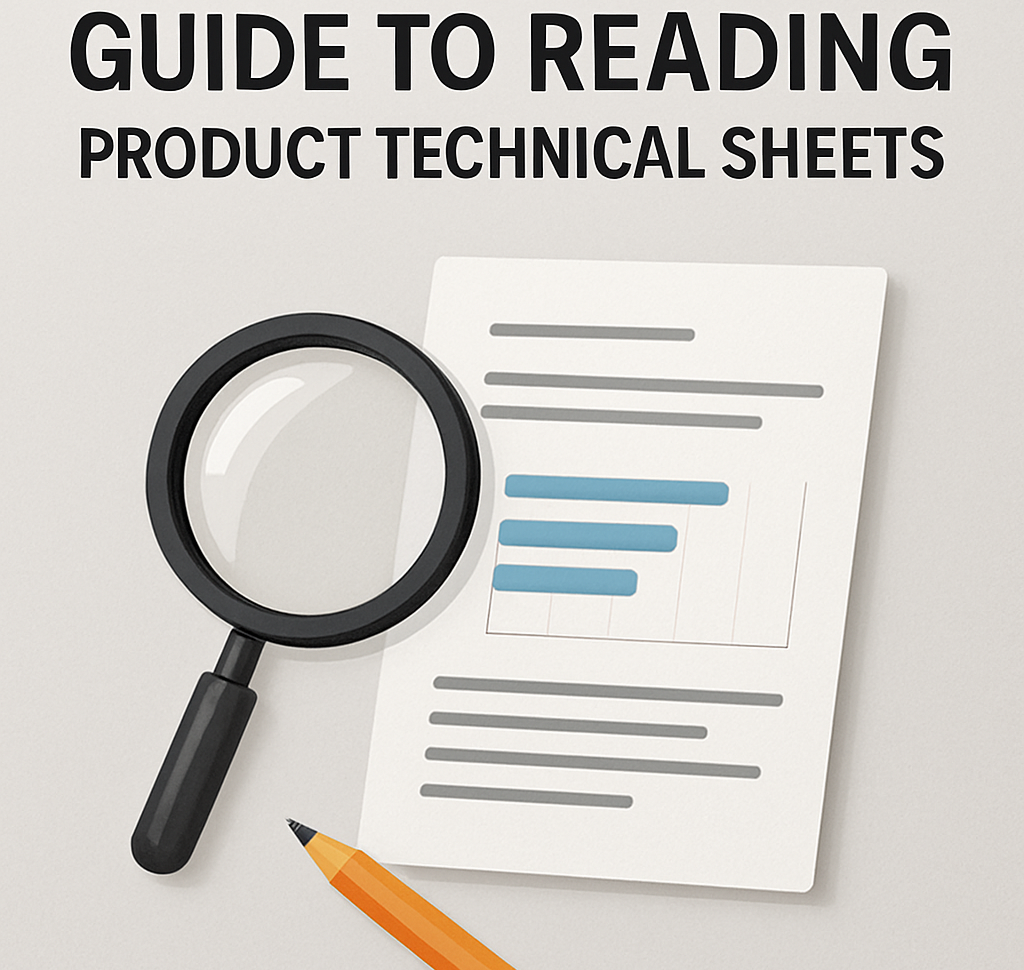If you’ve ever tried to compare dental products or medical supplies and found yourself staring at a dense, confusing document full of technical terms—you’re not alone. That document is called a technical sheet, and learning how to read it is a key skill for anyone involved in purchasing or using clinical products
This guide will walk you through what a product technical sheet is, why it matters, and how to read one like a pro, even if you’re just starting out.
What Is a Product Technical Sheet?
A technical sheet (also known as a spec sheet or a datasheet) is a document provided by the manufacturer that outlines important details about a product’s materials, performance, standards and usage.
Think of it as a product’s resume—it tells you what the product’s material is made of, what it can do, how to use it, and whether it meets industry safety standards.
Why Are Technical Sheets Important in Dentistry?
✅ Ensure patient safety by confirming biocompatibility, sterilization methods, and regulatory compliance.
✅ Compare similar products across different brands with clear, factual data.
✅ Support purchasing decisions with details on quality, durability, shelf life, and storage.
✅ Meet legal and audit requirements by keeping proper documentation.
Whether you’re buying bone grafts, instruments, gloves, or curing lights— a technical sheet helps you avoid poor-quality or non-compliant products.
How To Read a Technical Sheet (Key Sections to Look For)
Here’s a breakdown of what you’ll usually find on a technical sheet and what each part means:
- Product Description
A short summary of what the product is and what it’s used for.
Example: “Synthetic bone graft material for ridge preservation and sinus lift procedures.” - Material Composition
Lists the components used to make the product. Look for:
– Natural or synthetic materials
– Biocompatibility
– Latex-free or BPA-free indicators
Example: “Composed of hydroxyapatite and beta-tricalcium phosphate (60:40 ratio)” - Indications & Contraindications
Shows what the product should and should not be used for.
Example:
Indicated for: Socket preservation, sinus augmentation
Not recommended for: Pediatric use, infected sites - Sterilization & Packaging
Tells you if the product is sterile and how it was sterilized (e.g. gamma radiation, ethylene oxide). Also includes packaging type and shelf life.
Pro Tip: If a product isn’t sterile, you’ll need to sterilize it yourself before use. - Instruction for Use (IFU)
Step-by-step guidance on how to use the protocol correctly, often with diagrams.
Tip: Improper use can affect performance and safety—even with higher-quality products. - Certifications & Regulatory Info
List standards like:
– CE marking (Europe)
– FDA clearance (USA)
– ISO certification
– Local authority registrations
Always verify that the product is compliant in your country - Storage & Handling
Gives temperature, humidity, and other storage requirements. This is especially important for materials like adhesives or grafts that degrade if not stored correctly.
Example: ” Store at 15-25°C. Protect from light and moisture.” - Shelf Life & Expiry
Shows how long the product is safe and effective to use. Expired products can lead to failed procedures or complications.
Tip: Rotate your stock regularly and check these dates often.
Red Flags to Watch Out For
🚫 Vague or missing certifications
🚫 No listed composition or sterilization method
🚫 Unrealistic claims without supporting data
🚫 “FDA registered” instead of “FDA cleared” (they’re not the same!)
If something looks suspicious or unclear, ask the supplier for clarification or documentation. A reputable manufacturer will always be transparent.
Final Thoughts: Make Smarter Purchase with Confidence
Reading product technical sheets might seem overwhelming at first, but with a bit of practice, it becomes second nature. These documents are your best defense against low-quality or non-compliant products and your best tool for making confident, informed choices.
So next time you’re comparing grafts, gloves, or gadgets—don’t just go by price or packaging. Grab the technical sheet and take a deeper look.

